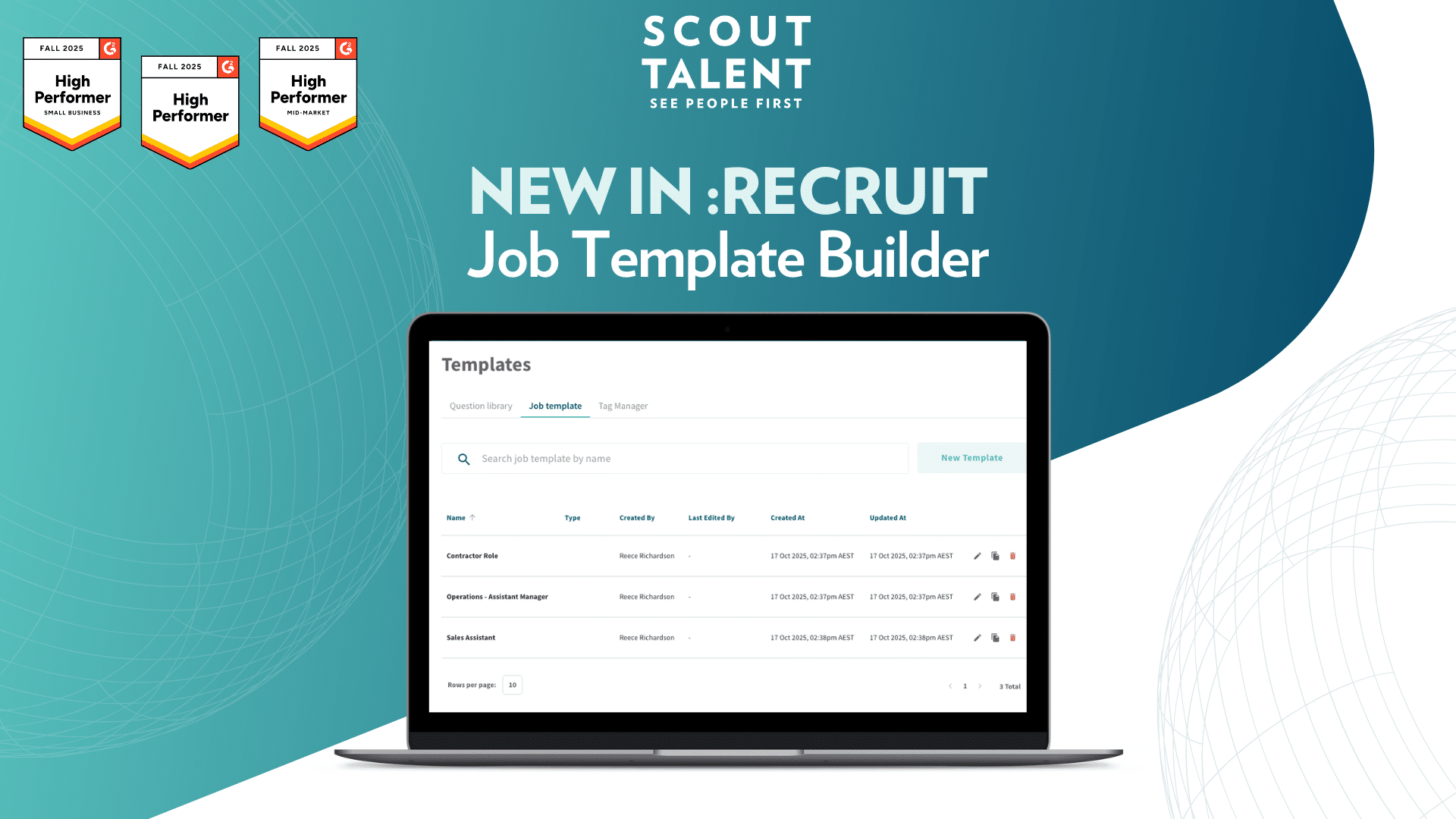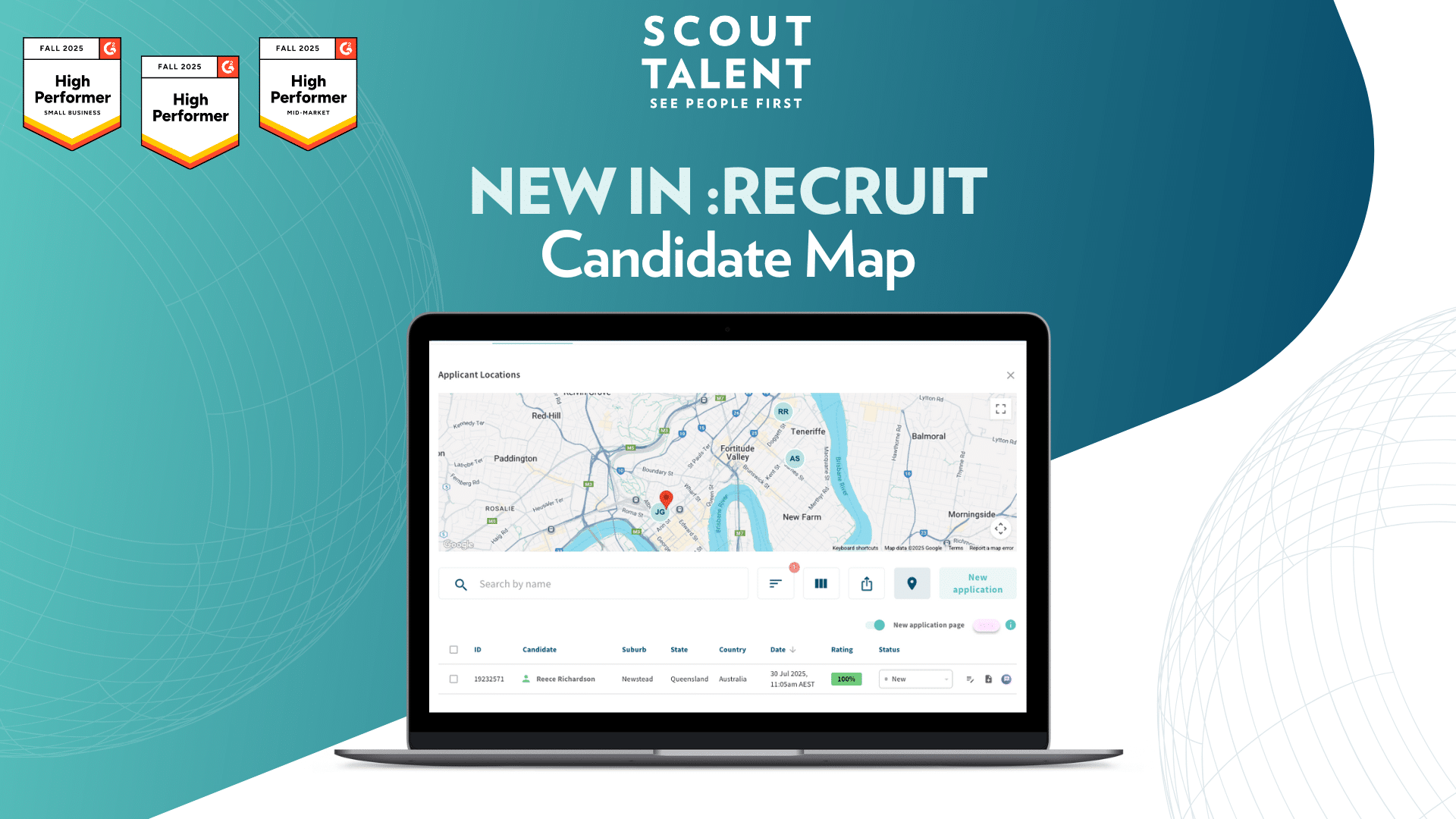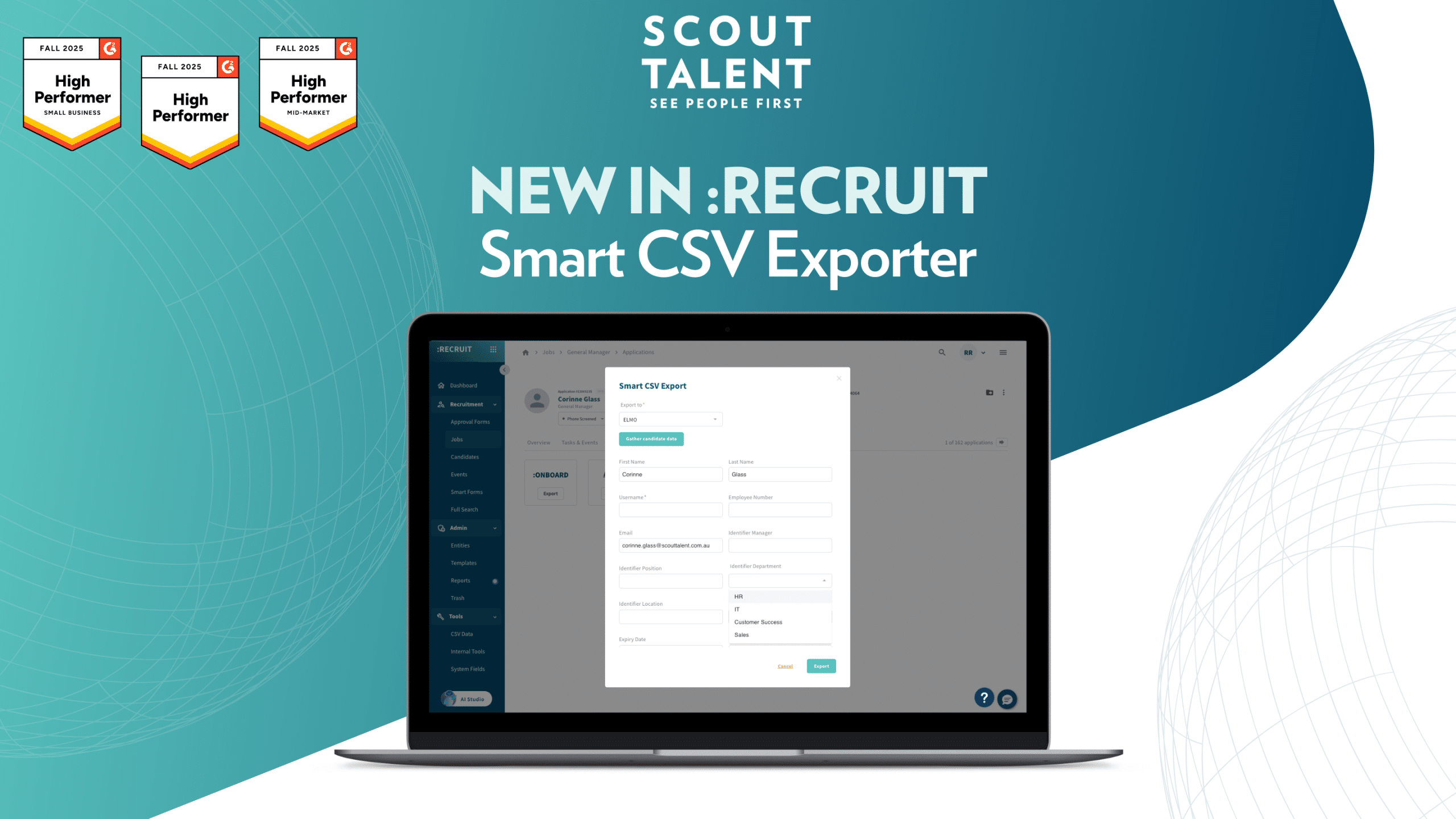This post is written by our Senior Recruitment Marketing Leader, Shane Keane.
In keeping with our theme of recruitment technology and leveraging automation to create a great experience for both candidate and hiring manager alike, today we are going to talk about how to choose your ideal recruitment tech stack.
What is Recruitment Technology?
Of course, to do this we first need to define what exactly a recruitment technology stack or a “rec-tech stack” is. Essentially, a recruitment technology stack is the software that you use for your recruitment process. It can be as simple as spreadsheets and inboxes or it can be as detailed as a full end-to-end process with software that caters to talent attraction and acquisition, application management, behavioural testing, interviewing, and onboarding.
Depending on your organization’s needs, scale, and age you’ll likely find yourself somewhere in between those two ends of the scale that I presented.
Do I need to change my current technology?
When it comes to picking your recruitment technology the first step is to really ask yourself and interrogate whether or not you should change or update your existing tech in the first place.
Think about your existing core product be it spreadsheets or something more robust, are you happy with it? How difficult would it be to change? What resources and budget do you realistically have available in order to implement this change?
If you’ve decided that change is needed, your next port of call is to establish what that change should look like.
Identifying your current strengths and weaknesses
The best way to start orienting the direction your change is going to take is to identify the strengths and weaknesses within your current recruitment process and team.
In an ideal world, you’re looking to find solutions that are going to bolster any weaknesses you establish. Take a holistic view of your recruitment process and see where you fall down. Be honest and examine things like your employer branding, talent attraction, ad copy and positioning, your ability to manage and respond to candidates, your ability to shortlist and interview candidates, behavioural testing and interpretation, background checks, and reference checks.
Review everything that I’ve mentioned as it stands now and establish if any of them are areas of weakness that could be improved upon with recruitment technology. If they are and it’s something you wish to rectify then it may be time to start exploring solutions.
When thinking about the sort of solutions you want to explore it can be helpful to consider the following:
- Do you want to focus on AI-powered and automation solutions?
- Who are your users and what are their needs and priorities?
- Are you looking for specialized features or an all in one solution?
- How difficult will your ideal solution be to implement? If your users can’t or won’t change then new software won’t improve anything.
It’s certainly easy and understandable to feel intimidated at this point by the sheer amount of options available but often the hardest part is, much like with anything, just getting started.
Getting started
Once you’ve established your areas of improvement and the capabilities of your team to change and implement, it’s time to get started on making that recruitment tech solution a reality.
A useful place to start can be at your earliest point of weakness, this is the earliest point in your recruitment process that you’ve established you need software or outsourcing to fill the gap. Another means of navigating what can feel like an overwhelming task is to pick a theme for the project that can help you make the right decisions as you continue to proceed towards your ideal recruitment tech solution. This will ensure that you and your team understand exactly what your needs are and the specific problems that you’re trying to solve.
Of course, neither of these options might work for you if your entire current software or process is not working for you at all. If this is the case you could instead get started by working your way back from what your ideal process might look like giving you more clarity about how to build each stage of your process.
With some ideas about what your potential recruitment technology solution might look like it’s now time to start getting in touch with providers and setting up demos.
Dealing with providers
When dealing with providers always try and keep the following questions in mind:
- How does this piece of technology solve my problem? Bells and whistles aren’t of much use if your main issue remains unsolved.
- Will my team embrace this technology? If they won’t, then it’s never going to make anything better.
- Is the recruitment technology flexible and scalable? Organizations always change and grow, can the technology you acquire grow and change with you.
A challenge when it comes to picking recruitment technology is establishing at what point you’re actually finished. You can always add more to your recruitment suite. But the last thing that you want to do is to continuously upgrade and add expensive or unnecessary tools and processes to your tech stack that don’t suit your needs and do nothing to address the original issues or issues that you had.
Knowing that you’ve reached your endpoint or that you’ve implemented the right solution will feel like a puzzle piece sliding in to place. It’s going to take a bit of self-trust, don’t over-engineer your processes, deliver what you know and overcome what you set out to change in the first place.
If you found this episode helpful and would like to learn more about choosing the correct Recruitment Technology, simply fill out the form below to download our comprehensive guide of the topic. Enjoy!

Your privacy is important to us. Zero spam. Unsubscribe any time.




